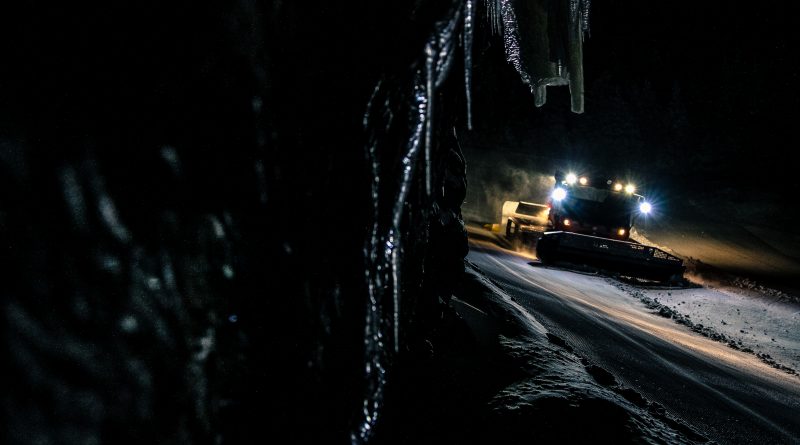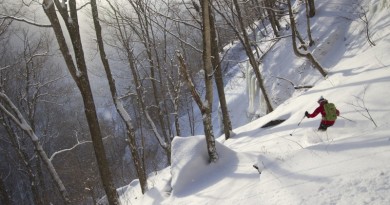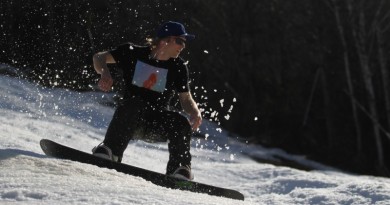The Night Shift: Keepers Of The Corduroy
Just after midnight, the windswept face of the mountain resembles the surface of the moon or the bottom of the ocean—featureless, remote and oppressive. The lamp on your helmet feebly pierces the night around you as gusts of wind nearing 30 miles per hour hit you in full-body blasts. Snot freezes in your nose and a heavy clump of ice on your balaclava or beard grows with every breath you take as you haul a 100-foot-long hose through knee-deep snow to a waiting snow gun.
At the end of the night, you return home and fall effortlessly and deeply asleep. The crazy part is you’ll be doing this again tomorrow.
You’ve read (and likely griped) about El Nino and La Nina, and heard about lake effect snows from Lake Champlain, but when it comes to getting the most out of the ski season, having the ability to create your own forecast doesn’t hurt.
Every year when the temperature drops, Vermont’s alpine and Nordic ski areas combine increasingly sophisticated snowmaking and forecasting technology with some old-fashioned muscle-power to give winter the jump-start it needs. The results: whales of creamy snow and wall-to-wall coverage, beginning as soon as the leaves fall and continuing through winter. And when Mother Nature gets stingy, the snow guns and snowmaking ponds and the men and women who manage them can, like last year, be the ski resorts’ saving grace.
Killington Resort has typically opened for what is consistently the longest season in the East. In past years, an arsenal of 1,700 guns and 88 miles of snowmaking pipe has blasted for 10 hours to layer the Rime and Reason trails on the North Ridge—a total of 600 vertical feet—with five inches of the good stuff the day before.
For Jon Kuehn, a Killington snowmaker with 17 years of experience under his helmet, it’s a sight he loves.
“It’s sort of addicting,” he says. “You’re creating large piles of snow and seeing your creation every day.”
Getting two trails ready for opening day is one thing, but preparing Killington’s centerpiece trail—the double-diamond Superstar—ready for a FIS World Cup Race and the likes of Mikaela Shiffrin is another story. For a world-class race, the snow surface has to be deep enough and hard enough to withstand any weather. In many years, Killington’s snowmaking team took advantage of a late-October cold snap to blast snow piles up to 10 feet deep on Superstar in preparation for the Thanksgiving weekend reaces.
Asked about concerns for rain or the erratic weather patterns, Kuehn laughs. “We give it some, the rain takes some, but we’ll give it some more when it gets cold again,” he says, confident in the resort’s ability to create enough snow.
Under ideal conditions, Killington’s snowmaking system delivers 10 million gallons of water per day to more than 250 snow guns, covering 60 acres with 12 inches of fresh snow every 24 hours.
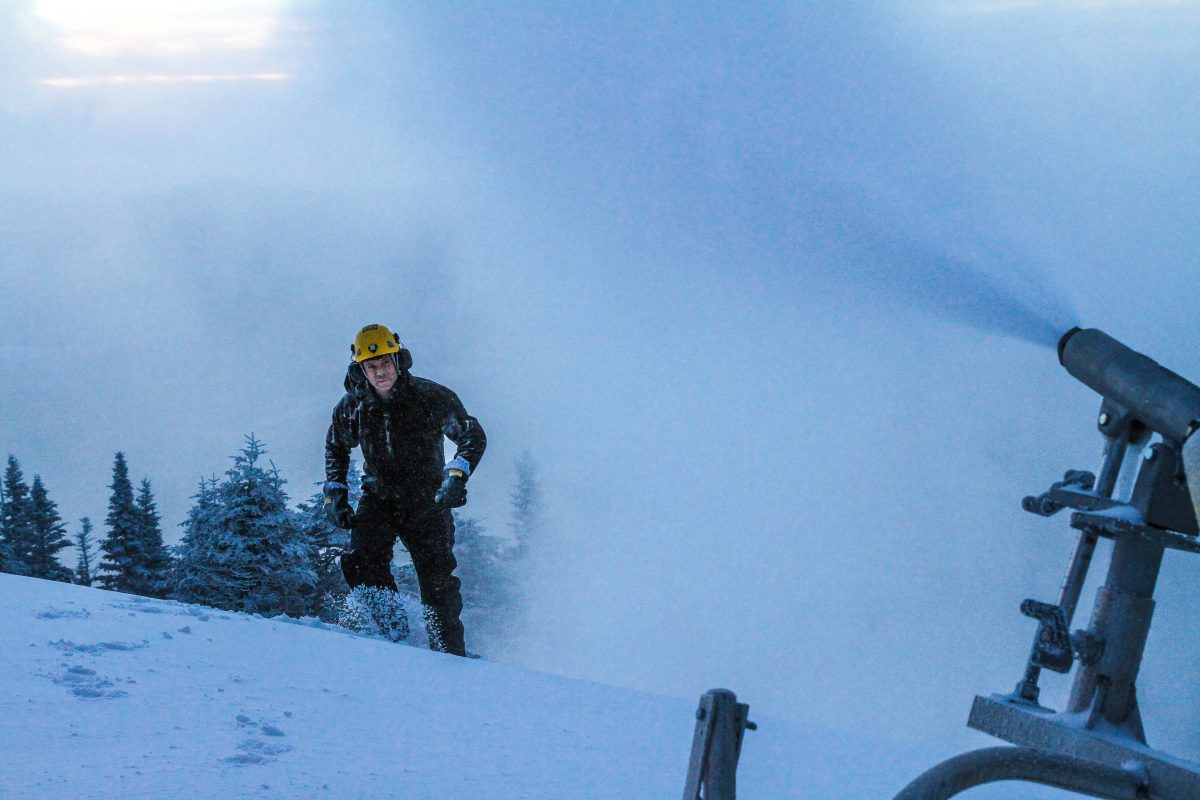
A Hard Day’s Night
New snow guns, automated systems and better temperature forecasting have vastly improved the quality and quantity of the snow produced throughout the state.
At Stowe Mountain Resort, the snowmaking system has evolved into an elaborate science. Under AIG ownership, a $10.5 million snowmaking expansion replaced the majority of on-hill snowmaking pipe, added over 600 tower guns and 36 automated fan guns, and upgraded pumping stations. Plus, the new energy-efficient guns from HKD allowed the resort to eliminate the need for eight diesel compressors and saved 100,000 gallons of diesel fuel used to power them.
“With a fixed piece of equipment you have to connect the hoses and fire away,” said Stowe’s V.P. of mountain operations at the time, Scott Reeves. “With the new automated fan guns, it’s as easy as a click of the mouse.”
Still, much of snowmaking is physical work. While crews use snowmobiles, four-wheelers, and snowcats, there’s still plenty of walking to be done. Over the course of his nightly shift, Killington’s Kuehn says he walks about 10 miles while dragging or carrying equipment or hoses that can weigh up to 30 pounds. “Now’s the time of year when I start eating a lot of food and burning a lot of calories,” he says.
Meanwhile, the work exposes snowmakers to extreme winter weather. At 20 degrees below zero, even the heavy parka and pants they wear can feel like a paper bag, and snowmobiles have to keep running, as they may not restart if shut off. At the summit, wind chill can drive temperatures to as low as 80 below zero.
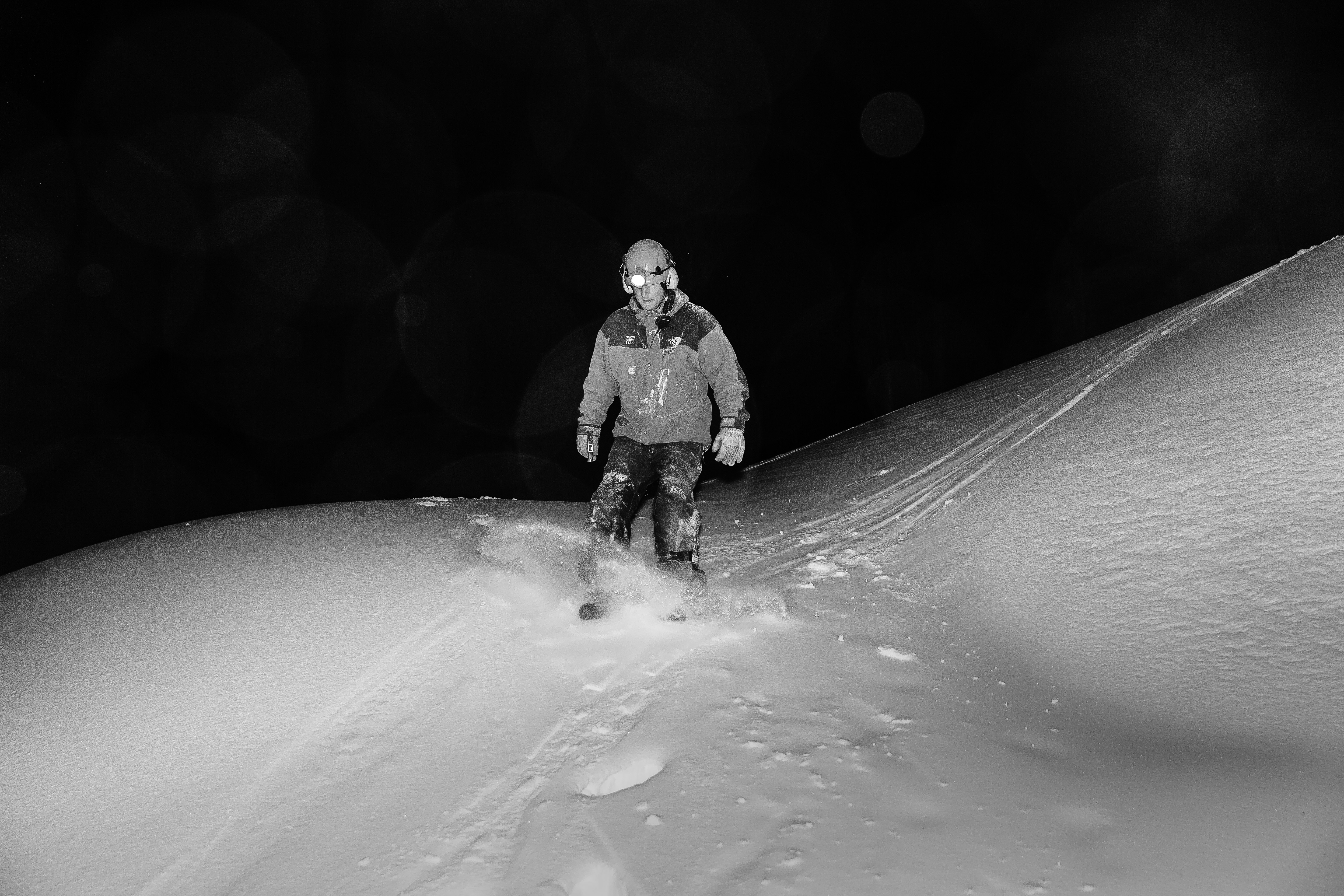
At the Middlebury College Snow Bowl, a small but dedicated staff of 12 mans the snowmaking system in three eight-hour shifts every day, meaning even former general manager Peter Mackey would suit up to wrangle snowmaking hoses. The equipment is heavy and in the dark, even experienced snowmakers can become disoriented.
“Even with these high powered headlamps, it doesn’t compare to working in the daytime,” he says. “It’s hard to be mindful of where you are, and then you’ll hit a steep section you weren’t expecting and go for a ride downhill.”
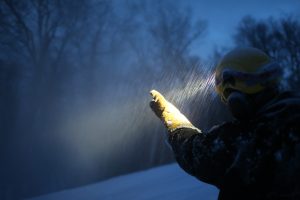
Less Cowboy, More Scientist
In 2013, Okemo Mountain Resort made its largest investment in snowmaking in a decade; nearly $1 million in pumps, pipeline and a variety of snow guns to cover nearly all of the resort’s trails, ranging from 225 HKD SV tower guns to more mobile guns that can be dragged on sleds. All that new equipment allowed the area to go from green grass to trails where skiers and riders can be linking turns after just 10 days of blowing snow.
“Operation Snowburst,” as the resort named its expansion campaign, saw another boost the following year, with 100 more HKD tower guns.
These newer snow guns feature valves that can regulate water flow for the weather conditions, going from low-flow at high temperatures (above 32 degrees Fahrenheit) to higher flow at lower temperatures. While the older HKD guns pushed 50 CFMs (cubic feet of air per-minute), the newer guns go between 80 and 100 CFM of air. As a result, 98 percent of Okemo’s 655 skiable acres are covered by its snowmaking system, manned by groups of about 10 snowmakers per 12-hour shift.
The story is similar at Mount Snow, Vermont’s southernmost ski resort. In the past decade, the resort has added 645 low-energy snow guns and 10,000 feet of snowmaking pipe from the base area to the summit. A new 120-million-gallon snowmaking reservoir called the West Lake Project has helped power it.
The new guns allow the system to start up more quickly and uses the water more accurately for the temperature range snowmakers are working in. Mount Snow’s former vice president of Mountain Operations Brendan Ryan says the result is more cost-effective snowmaking and more consistent snow quality.
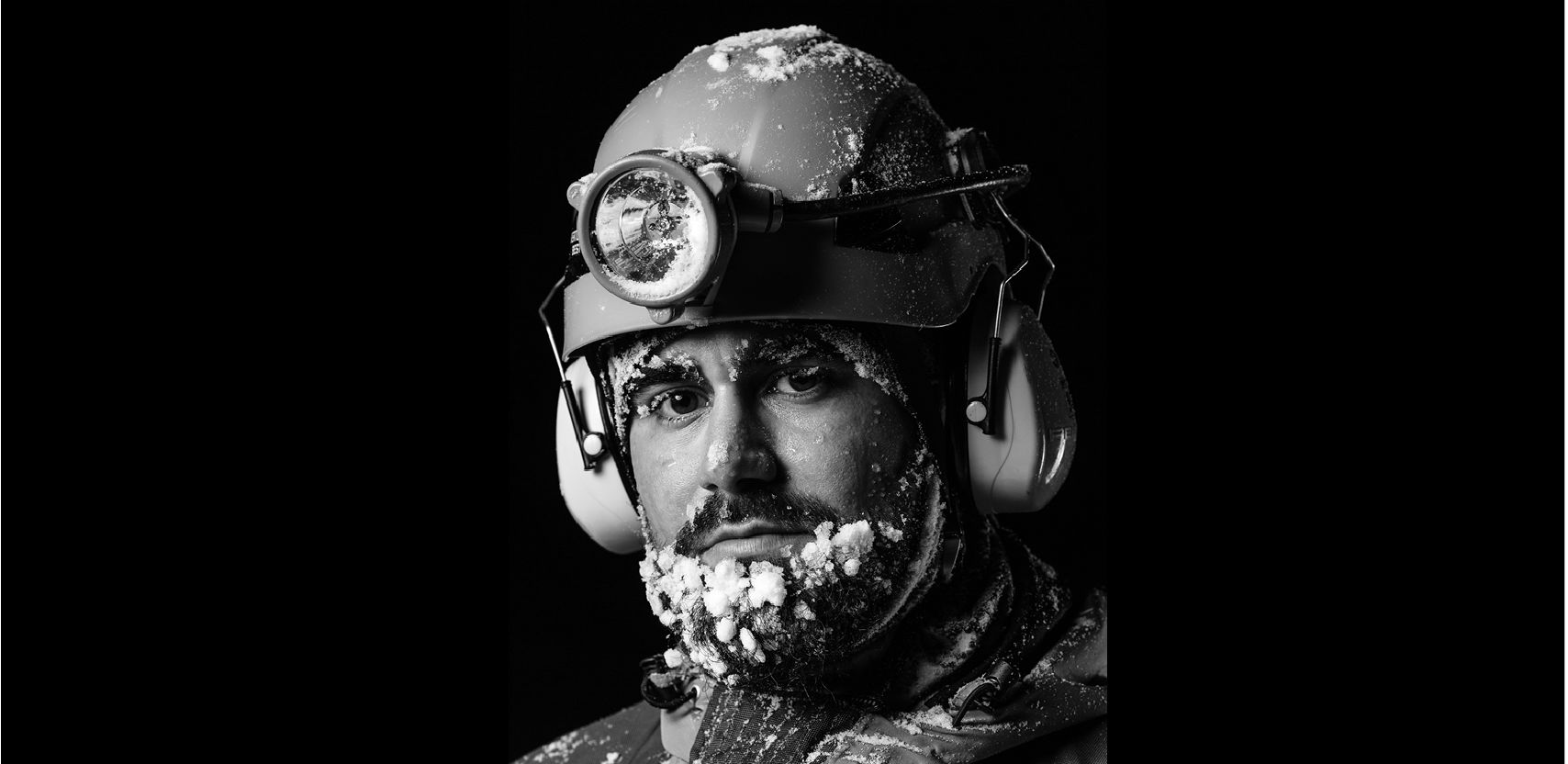
“An old-school snowmaker with 30 years of experience who’s dialed in can make fantastic snow with the older, louder, ground gun technology, but it’s more susceptible to changes in pressure,” he says. “There’s a lot more going on when you’re in the balance of air and water. It’s harder to make mistakes with these new fan guns.”
As a result, Ryan says the nature of the work on the hill has changed.
“The guys that do best in this work take a real interest in the technology. It’s less of a cowboy attitude, there’s more science involved,” he says.
In 2015, in a season that saw temperatures in the 60s on Christmas, Mount Snow pumped 18 percent more water than any other year in the area’s 62-year history and was blowing snow into March.
“Having this lower energy technology allowed us to continue to make snow where it would have otherwise been cost-prohibitive,” Ryan says. “It helped to save our season, as challenging as it was.”
Featured photo of a Stowe snowcat by Mike Hitelman

